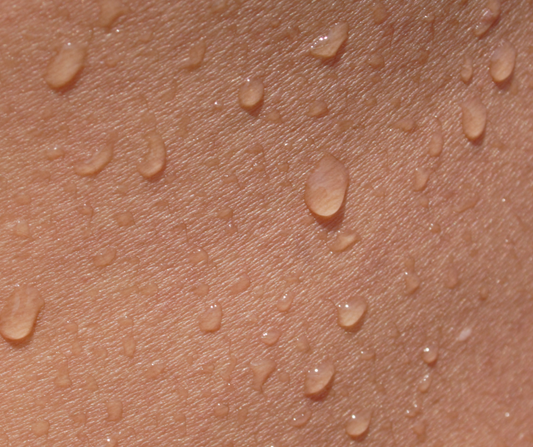The ovaries experience a different life cycle than the human body around them. The ovaries activate during puberty and age early, well before the age of 40. But what happens to the whole system around the age of forty? When you can't really relate to the menopause imagery based on a selfie or reflection?
Perimenopause or PMS, and what's the difference?
Perimenopause is a long period before actual menopause, and its symptoms can be very similar to PMS (premenstrual syndrome). Surprisingly, the precise mechanisms behind both PMS and perimenopause remain unclear!
While PMS has a diagnostic code, perimenopause does not. This lack of formal recognition implies it isn’t classified as a medically treatable condition. Perimenopause is undoubtedly real, but it hasn’t yet garnered the attention or scientific research it deserves.
The main difference between PMS and perimenopause is that while PMS is cyclic and the symptoms come regularly before and during menstruation, the symptoms of perimenopause may not follow the same predictable cycle. Because of this irregularity, hormonal changes are often overlooked, and symptoms are mistakenly attributed to mood swings, relationship issues, fatigue, or stress.
My interpretation is that because the symptom profiles are similar, perimenopause is often seen as an aggravated form of PMS due to age. Drawing the line between these two stages is not critical for treatment, as symptom relief is based on similar principles. The most important thing is to recognize and acknowledge the symptoms as real and then to address them individually to find the best way to alleviate them.
Mood swings reminiscent of adolescence - but without the highs of youthful excitement.
Typical mood symptoms in both perimenopause and PMS include sadness, irritability, anger, tearfulness, and anxiety. The condition may also be associated with insomnia, the need for naps, difficulty concentrating, and a desire to withdraw from social situations.
"Why are you always in such a bad mood?"
A question many patients have heard or asked themselves. The issue is often mentioned somewhat embarrassedly, wondering if it’s even "gynecological" and if it makes sense to talk to a doctor about it instead of considering (couple) therapy.
Many women are also shocked by their lowered irritation threshold or unpredictable reactions at home. All parenting guides have been read, meditation is in use, yet the tolerance for a child's (or partner's) behavior is at zero or even below. Even if it’s just a fairly typical everyday situation (the kitchen’s not cleaned, no food prepared, toys scattered around the house, or a child’s belongings forgotten somewhere) the reaction can be disproportionate and even frightening.
PMS and perimenopause also cause physical symptoms
Metabolism slows down during perimenopause, and weight management can become more difficult. Physical symptoms like bloating, digestive discomfort, stomach pain, joint and muscle aches, and skin problems - common in PMS - are also frequent in perimenopause.
Menstrual flow usually becomes heavier before it eventually stops, but this typically happens very close to actual menopause. The underlying causes can include several factors, such as hormones, polyps in the mucous membranes, or benign tumors (fibroids) in the uterine muscle layer (which are also hormonally driven). For this reason, it’s recommended to have a gynecological examination, especially if menstrual bleeding becomes unusually heavy or painful.
In perimenopause, menstrual periods usually become lighter than in youth, and the cycle may shorten. What once required effective protection for 3-4 days may now only require protection for a couple of days.
This isn’t hysteria; it’s hormonal changes
Hysteria is a term whose origin is in the uterus. It refers – somewhat derogatorily – to mental symptoms typical of women, which were believed to be caused by an unsettled, wandering uterus. In a way, this idea was on the right track, but the problem lies not in the uterus but in the ovaries and the hormonal changes they cause.
I’m a gynecologist, a mother of three, and a woman in my forties. I see changes in hormonal function through both a professional and a very personal lens. I understand that as a doctor, I can make problems real, validate them, and just doing that has a huge impact on managing symptoms and mental well-being.
The issue isn't that the symptoms aren't real; it’s that we’ve been accustomed to talking about them in a certain way. The problem isn’t hysteria; it’s that hormonal function is changing, and our bodies are reacting. Mood is biochemistry, and its neurotransmitters depend on hormones, and it is these same hormonal changes that also cause physical symptoms.
How to approach hormonal treatment?
Hormonal treatment balances the hormonal fluctuations in the cycle, which is why hormonal birth control can be a lifesaver for many dealing with PMS symptoms! Hormonal medications, like progestin-only therapy, can help alleviate perimenopause symptoms even without added estrogen. For most women, it’s used for contraception, menstrual cramps, or heavy bleeding, and doesn’t address hormonal changes that come with aging – neither for good nor bad!
Not everyone can or wants to use hormonal medication, and maintaining a natural cycle is a valid preference. Non-hormonal treatments and lifestyle changes can make a significant difference. During perimenopause, the need for rest increases, recovery takes longer, and sensitivity to caffeine and alcohol heightens. Exercise and dietary adjustments are particularly impactful. Ultimately, understanding your body and recognizing that your symptoms are real is key to managing them effectively and finding ways to improve your quality of life.
There are also non-hormonal treatment options, and lifestyle changes can have a huge impact! In perimenopause, the need for rest increases, recovery takes more time, and sensitivity to caffeine and alcohol is heightened. The benefits of exercise and potential dietary changes are significant, and their importance cannot be overstated.
The most important thing is knowledge and understanding of how your own body works. Symptoms are easier to manage when you know they’re real and understand their causes. From there, you can gradually find ways to live better with them.
About the Author
Aura Pyykönen is a seasoned obstetrician-gynecologist with a passion for women's health and well-being. As a mother of three and a woman in her forties, she brings both professional expertise and personal insight to her work, offering a deeply empathetic approach to the complexities of hormonal health. Aura is committed to empowering women with knowledge about their bodies and helping them navigate the various stages of life with confidence and clarity. Her goal is to make even the most misunderstood topics approachable, validating the real experiences of her patients while advocating for holistic and individualized care.


















